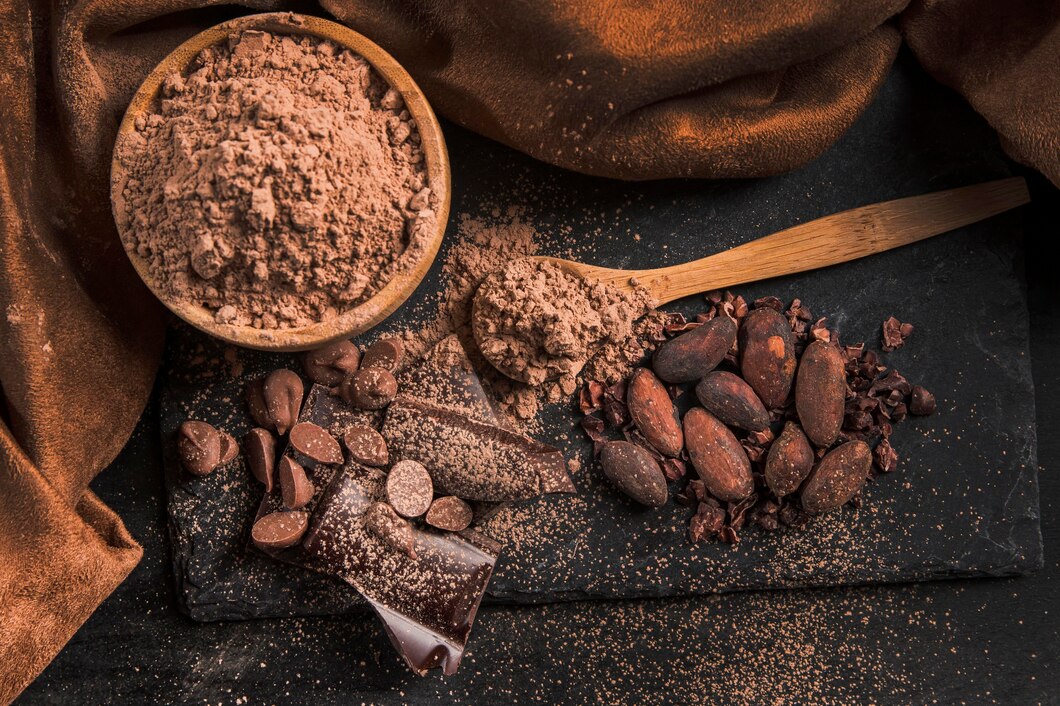Maintaining a low-sugar diet can be challenging, especially for chocolate lovers. However, there are plenty of delicious alternatives that can satisfy your sweet cravings without the added sugar. Here are five foods you can substitute for chocolate while keeping your sugar intake in check.
1. Carob
What It Is:
Carob comes from the carob tree, which produces pods filled with sweet, edible pulp. The pods are dried, roasted, and ground into a powder that resembles cocoa powder.
Why It’s a Good Substitute:
Carob is naturally sweet and contains no caffeine, making it a great alternative for those looking to reduce their sugar and caffeine intake. It also has a lower fat content compared to chocolate.
How to Use It:
- Use carob powder in baking recipes, smoothies, and hot beverages.
- Carob chips can replace chocolate chips in cookies, muffins, and trail mixes.
2. Cocoa Nibs
What It Is:
Cocoa nibs are small pieces of crushed cacao beans that have a slightly bitter, chocolatey flavor without the added sugar.
Why It’s a Good Substitute:
Cocoa nibs are rich in antioxidants, fiber, and healthy fats. They provide a crunchy texture and intense chocolate flavor without the sugar content found in processed chocolate.
How to Use It:
- Sprinkle cocoa nibs on yogurt, oatmeal, or smoothie bowls.
- Use them in baking for a chocolatey crunch in cookies and granola bars.
3. Nut Butters
What It Is:
Nut butters like almond, cashew, and peanut butter are creamy spreads made from ground nuts. They offer a rich, satisfying flavor and texture.
Why It’s a Good Substitute:
Nut butters are naturally low in sugar (if you choose varieties without added sugars) and high in protein and healthy fats. They can mimic the creamy texture of chocolate spreads without the added sugar.
How to Use It:
- Spread nut butter on whole-grain toast or fruit slices for a satisfying snack.
- Add a spoonful to smoothies for a creamy texture and nutty flavor.
4. Coconut
What It Is:
Coconut products, such as shredded coconut, coconut flakes, and coconut butter, offer a naturally sweet flavor and rich texture.
Why It’s a Good Substitute:
Coconut contains natural sugars but in much lower amounts compared to chocolate. It also provides healthy fats and fiber, making it a nutritious alternative.
How to Use It:
- Use unsweetened shredded coconut in baking recipes like cookies and cakes.
- Add coconut flakes to yogurt, smoothies, and trail mixes.
- Spread coconut butter on toast or use it as a dip for fruits.
5. Dates
What It Is:
Dates are naturally sweet fruits that come from the date palm tree. They have a rich, caramel-like flavor and chewy texture.
Why It’s a Good Substitute:
Dates are naturally high in sugars but contain fiber, vitamins, and minerals, making them a healthier option than processed chocolate. They can add sweetness and moisture to recipes without the need for added sugars.
How to Use It:
- Blend dates into smoothies for natural sweetness.
- Use date paste as a sweetener in baking recipes like brownies and energy bars.
- Stuff dates with nut butter or nuts for a delicious, satisfying snack.
Tips for Reducing Sugar Intake
- Read Labels: Always check the ingredients list and nutrition facts to avoid hidden sugars in packaged foods.
- Use Natural Sweeteners: Opt for natural sweeteners like stevia, monk fruit, or erythritol in place of sugar in recipes.
- Control Portions: Even natural substitutes can add up in calories and sugars. Enjoy them in moderation as part of a balanced diet.
- Increase Fiber: Incorporate high-fiber foods like fruits, vegetables, whole grains, and legumes to help manage sugar cravings and promote satiety.
Reducing sugar intake doesn’t mean you have to give up on your favorite treats entirely. By incorporating these five delicious substitutes—carob, cocoa nibs, nut butters, coconut, and dates—you can enjoy sweet, satisfying flavors while maintaining a low-sugar diet. Experiment with these alternatives in your recipes and discover new, healthier ways to indulge in your sweet tooth.








